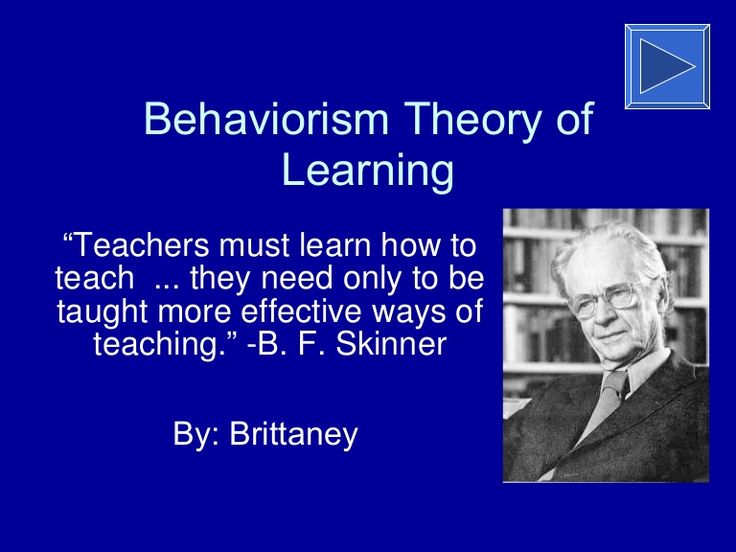Skinner Used Operant Conditioning to Describe
Respondent behaviors are those that occur automatically and reflexively such as pulling your hand. The History of Operant Conditioning.

Operant Conditioning Operant Conditioning Operant Conditioning Psychology Operant Conditioning Activities
Step 1 of 3.

. Skinner which is why. An animal or a human receives a consequence after performing a specific behavior. Click again to see term.
Stimuli were typically in the form of rewards positive or punishments negative. Skinners Operant Conditioning Theory. Both classical and operant conditioning depends on the stimulus-control procedures.
The Skinner Box is also referred to as an operant conditioning chamber A Skinner Box is a often small chamber that is used to conduct operant conditioning research with animals. Skinner coined the term Operant Conditioning as a branch of Watsons Classical Conditioning and studied it by conducting experiments using animals namely rats placing them in what he called the Skinner Box Operant Conditioning consists of changing behaviour by the use of reinforcements which are given after the desired. Skinner and also known as an operant conditioning chamber this box also has a device that records each response provided by the animal as well as the unique schedule of reinforcement that the animal was assigned.
Tap card to see definition. Operant active behavior that operates upon the environment to generate consequences - process by which responses become linked to a specific stimuli. He developed the Operant Conditioning Pigeon Chamber and other devices to enable him to conduct controlled experiments.
An operant or instrumental conditioning is a learning process which strengthens. Operant conditioning is based on the work of B. What Is Operant Conditioning and How Does It Work.
Click card to see definition. - influential behaviorist -Skinner box experiment - believed children were taught language. Skinner based his theory in the simple fact that the study of observable behavior is much simpler than trying to.
-Also had a speakerlight that could be used to trigger a behaviour and a shock generator to deliver electric shock in response to behaviour. Skinner is the founder of operant conditioning building his theory on the premise that external stimuli affects or controls our behavior. Up to 24 cash back Operant Conditioning.
Common animal subjects include rats and pigeons. Operant Conditioning BF. Skinner in 1937 in the context of reflex physiology to differentiate what he was interested inbehavior that affects the environmentfrom the reflex-related subject matter of the Pavlovians.
The term was novel but its referent was not entirely new. The term operant conditioning 1 was coined by B. Two principles namely Skinners operant conditioning and Pavlovs classical conditioning gave the scientific community two methods to analyze the learning processes in an objective-oriented way.
Skinner was interested in how environmental experience and learning caused modification of certain behaviors. Operant Conditioning It is a type of learning that involves an increase in the probability that a response will occur as a function of reinforcement. -Designed box and contained a lever for an animal ratpigeon to press for food.
Skinner is based upon the idea that learning is a function of change in overt behavior. In this form of conditioning operant response with stimuli is allowed to occur and is followed by a reinforcing stimulus for which there is a increased likelihood that the operant will occur again. Operant conditioning also known as instrumental conditioning is a type of learning process that determines whether an action will be repeated based on reward or punishment.
Within the chamber there is usually a lever for rats or a key for pigeons that an individual animal can operate to obtain a food or water within the chamber as a reinforcer. Changes in behavior are the result of an individuals response to events stimuli that occur in the environment. Skinner The theory of BF.
_____ is a term used in operant conditioning to describe a stimulus that strengthens the frequency of. Skinner 1953- coined operant conditioninginstrumental conditioning. Operant conditioning is a form of learning in which the motivation for a behavior happens after the behavior is demonstrated.
The most important among these theories was Operant Conditioning proposed by Burrhus Frederic Skinner commonly known as BF. Operant conditioning was first described by behaviorist BF. The consequence is either a reinforcer or a punisher.

Operant Conditioning Chamber Wikipedia The Free Encyclopedia Operant Conditioning Skinner Box Developmental Psychology

Theories Compared Learning Psychology Learning Theory Operant Conditioning

Skinner S Quadrant Series Part 1 Operant Conditioning Therapy For Autism Psychology

The Skinner Box Operant Conditioning Skinner Box Constructivist Learning Theory

Behaviorism Theory Of Learning Learning Theory Effective Teaching Operant Conditioning

Operant Conditioning Using Positive Vs Negative Dog Training Methods Correctly Operant Conditioning Dog Training Methods Dog Training Obedience

A Picture Of The Skinner Box His Way Of Testing His Theory Operant Conditioning Skinner Box Language Acquisition Theories

Operant Conditioning Graph Operant Conditioning Behavior Modification Social Skills Training

Operant Conditioning In Chapter 05 Conditioning From Psychology An Introduction By Russ Dew Operant Conditioning Math Homework Help Behavioral Psychology
0 Response to "Skinner Used Operant Conditioning to Describe"
Post a Comment